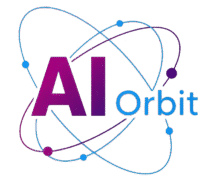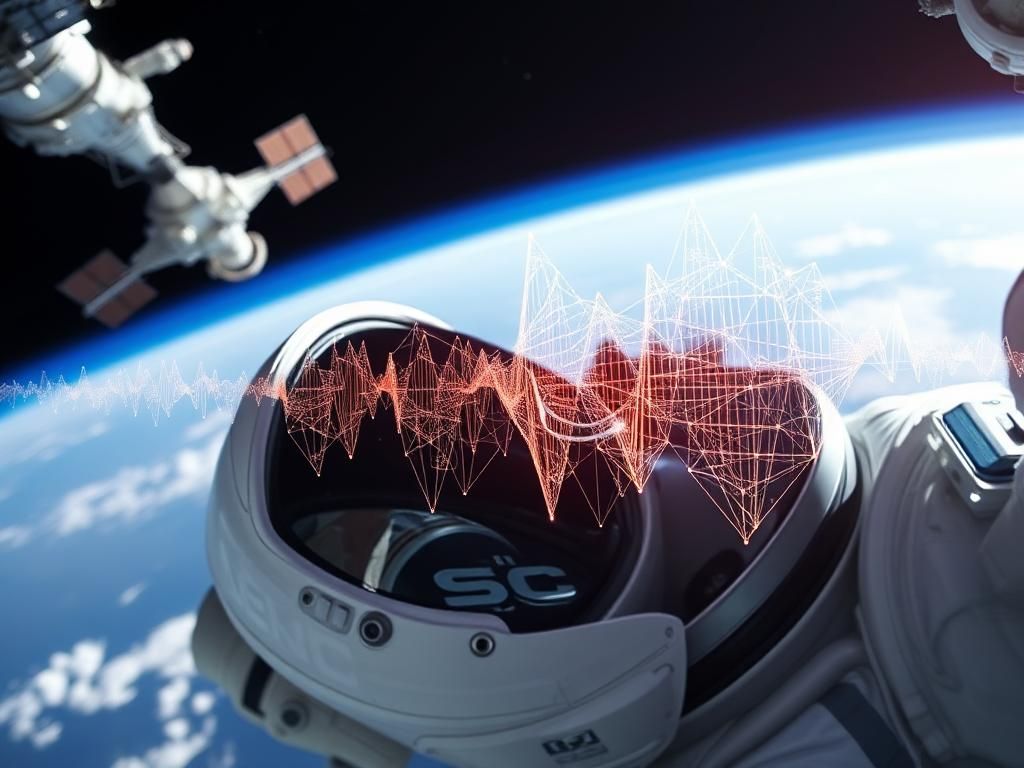The International Space Station (ISS) stands as a beacon of human ingenuity, a bustling orbital laboratory where the boundaries of science and human endurance are continually pushed. Within its quiet, microgravity environment, a pioneering cohort of astronauts, including India’s Shubhanshu Shukla and his Ax-4 crewmates, are undertaking a series of groundbreaking experiments designed to unravel the mysteries of the human body in space. These studies are not merely academic pursuits; they are critical for ensuring the health and safety of future space explorers, and, remarkably, they are yielding insights that could profoundly impact technologies and medical practices right here on Earth.
VOICES FROM ORBIT: SHAPING AI AND THE FUTURE OF SPACE EXPLORATION
The cosmic ballet of human spaceflight presents unique challenges to the physiological systems that keep us grounded on Earth. Gravity, a constant companion in our terrestrial lives, dictates everything from our blood flow to the way our vocal cords vibrate. In its absence, subtle yet significant changes occur within the human body, changes that scientists are now meticulously studying to prepare for humanity’s next giant leaps to the Moon and Mars.
THE SOUND OF SCIENCE: INVESTIGATING VOICE IN MICROGRAVITY
One of the most fascinating experiments underway is the “Voice in Space” study, a pioneering investigation into how microgravity alters human speech. On Earth, the act of speaking involves a complex interplay of the respiratory system, vocal cords, and articulators, all influenced by the steady pull of gravity. In the weightlessness of orbit, however, the usual pull on the lungs, diaphragm, and vocal tract vanishes, leading to subtle, sometimes imperceptible, changes in vocal fold vibration, tone, and even speech patterns.
The Ax-4 crew, including Shubhanshu Shukla, have been key participants in this study, lending their voices—quite literally—to scientific inquiry. Researchers are employing electroglottography, a non-invasive technique that measures vocal fold contact during voice production. This method, combined with a series of carefully designed scripted vocal tasks, allows scientists to capture these minute shifts in real-time. The tasks include:
- Reading passages: To assess changes in natural speech cadence and articulation.
- Singing specific notes: To evaluate vocal range, pitch stability, and control.
- Vowel enunciation: To pinpoint alterations in fundamental vocal production.
- Audio pitch matching: To test the ability to maintain or replicate specific tones.
These detailed audio recordings and physiological measurements provide comprehensive data for tonal analysis, vocal performance evaluation, and the detection of voice pattern changes influenced by the space environment. The ultimate aim is not just to understand these changes but to harness this knowledge for practical applications.
TRAINING AI FOR COSMIC FRONTIERS AND EARTHLY APPLICATIONS
The most compelling aspect of the “Voice in Space” study lies in its ambition to train artificial intelligence systems. The hypothesis is that AI algorithms could one day detect these influenced voice patterns and cognitive function changes in astronauts in real-time. Such a capability would be revolutionary for autonomous health monitoring during long-duration missions, where immediate access to medical professionals might be limited. An AI system capable of flagging subtle vocal indicators of fatigue, stress, or early health concerns could provide critical early warnings, enabling timely interventions and significantly enhancing crew safety.
Beyond the immediate needs of space travel, the insights from this study hold profound implications for voice-based AI technologies back on Earth. As Axiom Space explains, “Vocal characteristics of an ISS crew member can change in a zero-gravity, and after undergoing cognitive function changes. Measurements of vocal fold vibration provide a quantitative indication of vocal fold function.” This innovative approach holds immense potential not only for safeguarding the well-being of future spacefarers but also for refining voice-based AI technologies here on Earth. Imagine, for instance, how the data gleaned from these experiments could inform the development of more nuanced and adaptive speech recognition systems, or even enhance the naturalness of synthesized voices. Indeed, tools such as a free AI audio generator, which are making advanced audio creation accessible to everyone, could directly benefit from a deeper understanding of human vocalization under varying physiological conditions. The insights gained from the ISS will push the boundaries of what these sophisticated algorithms can achieve, making voice interfaces more intuitive and lifelike for countless applications, from virtual assistants to remote communication systems.
The symbiotic relationship between space research and AI development is becoming increasingly clear. The extreme conditions of space provide an unparalleled testing ground for AI’s capabilities, while AI, in turn, offers powerful tools to analyze complex biological data and provide solutions for human challenges both in orbit and on our home planet.
CEREBRAL HEMODYNAMICS: UNRAVELING BRAIN BLOOD FLOW IN SPACE
Alongside the voice study, the Ax-4 crew has been diligently participating in the “Cerebral Hemodynamics” investigation. This crucial experiment delves into one of the most significant physiological adaptations to spaceflight: how blood flows through the brain in a zero-gravity environment. On Earth, gravity constantly pulls fluids downwards, but in space, this pull is absent, leading to a phenomenon known as “fluid shift.”
THE FLUID SHIFT PHENOMENON AND ITS IMPACT
The fluid shift causes a noticeable redistribution of bodily fluids, pushing them towards the head. This can result in a range of symptoms and conditions for astronauts, including:
- Puffy faces and “bird legs”: Visible signs of fluid moving away from the lower extremities.
- Increased intracranial pressure: A potential long-term concern impacting vision and brain health.
- Visual Impairment Intracranial Pressure (VIIP) syndrome: A significant risk for long-duration missions, where astronauts experience changes in their eyesight.
ULTRASOUND IN ORBIT: DIAGNOSTIC BREAKTHROUGHS
To monitor these critical changes, scientists are employing ultrasound technology. By using ultrasound to visualize and quantify blood flow in the brain, researchers can track how the cardiovascular system adapts (or struggles to adapt) to microgravity. The data gathered from these sessions is invaluable for several reasons:
- Developing better diagnostic tools for astronauts: Understanding the precise mechanisms of fluid shift and its effects allows for the creation of more effective countermeasures and medical protocols to mitigate risks for astronauts on extended missions.
- Informing Earth-based medical research: The unique stress on the cardiovascular and neurological systems in space provides a powerful analog for studying conditions on Earth. Insights into how blood flow is regulated in microgravity could lead to breakthrough diagnostic tools and treatments for patients suffering from cardiovascular and neurological conditions, such as stroke, chronic dizziness, or recurrent fainting spells. The extreme environment of space accelerates and highlights physiological responses that might be harder to isolate in a conventional clinical setting.
This convergence of space medicine and terrestrial healthcare underscores the broad utility of human spaceflight research.
SUIT FABRIC STUDY: INNOVATING FOR A NEW GENERATION OF SPACEWEAR
The Ax-4 crew’s busy roster also included the “Suit Fabric Study,” a technology demonstration focused on understanding how clothing behaves in the unique conditions of space. This experiment goes far beyond mere comfort; it’s about the fundamental performance of textiles in an environment where familiar physical principles, like convection, no longer apply.
BEYOND COMFORT: PERFORMANCE IN EXTREMES
On Earth, our clothing relies heavily on convection to manage heat and moisture. Body heat is transferred to the surrounding air, which then rises and is replaced by cooler air. In microgravity, without the buoyant forces that drive convection, this process is significantly impaired. Heat and moisture tend to accumulate around the body, leading to discomfort, overheating, and potential performance degradation for astronauts, especially during strenuous activities or spacewalks.
SENSOR-EQUIPPED GARMENTS: THE EXPERIMENT
To study these dynamics, the crew wore specially designed, sensor-equipped garments during exercise sessions. These sensors meticulously collected data on heat distribution, moisture wicking, and overall thermal management. By observing how these advanced fabrics perform in a convection-free environment, researchers can identify optimal material compositions and design principles for future space suits and garments.
EARTHLY APPLICATIONS: FROM ORBIT TO ATHLETIC WEAR
The findings from the Suit Fabric Study are expected to have a dual impact:
- Next-generation space suits: The data will directly inform the design and engineering of more efficient, comfortable, and protective space suits for lunar and Martian surface operations, where astronauts will face extreme temperatures and radiation. Improved thermal regulation means safer and more productive extravehicular activities (EVAs).
- Innovations in thermal wear on Earth: The lessons learned in space about managing heat and moisture without convection are directly applicable to high-performance textiles on Earth. This could inspire significant advancements in a wide range of products:
- Sports gear: Creating athletic wear that better regulates body temperature and wicks away sweat, enhancing athlete performance and comfort.
- Medical textiles: Developing smart bandages, prosthetic linings, or therapeutic garments that provide superior temperature control for patients.
- Protective clothing: Designing more effective uniforms for firefighters, industrial workers, or military personnel operating in extreme conditions.
The space environment acts as an ultimate proving ground, pushing materials science to its limits and driving innovations that eventually trickle down to everyday consumer products.
THE INTERCONNECTEDNESS OF SPACE RESEARCH
These three seemingly distinct studies—Voice in Space, Cerebral Hemodynamics, and Suit Fabric Study—are deeply interconnected by a common thread: the comprehensive understanding of human physiology and performance in space. Together, they contribute to a holistic picture of astronaut well-being and operational efficiency, which is paramount for the ambitious goals of future space exploration.
HOLISTIC ASTRONAUT WELL-BEING
Every aspect of an astronaut’s health, from their cognitive function and vocal abilities to their cardiovascular health and comfort in their gear, plays a critical role in mission success. The ISS serves as a unique platform to conduct these integrated studies, allowing scientists to observe the human body’s complex adaptations to long-duration spaceflight. This multidisciplinary approach ensures that as humanity ventures further into the cosmos, astronauts will be equipped with the best possible support systems, both biological and technological.
ADVANCING HUMANITY ON EARTH AND BEYOND
The dual benefit of space research is a recurring theme. The challenges of space compel innovation that often finds unexpected applications on Earth. From advanced materials to medical diagnostics and even the refinement of artificial intelligence, the investment in space exploration consistently yields dividends that benefit society as a whole. This continuous cycle of discovery and application reinforces the value of exploring beyond our planet.
THE FUTURE OF HUMAN ENDEAVOR IN SPACE
The work conducted by Shubhanshu Shukla and the Ax-4 crew on the ISS is foundational for the next era of human spaceflight. As agencies like NASA, ESA, and ISRO set their sights on establishing a sustainable human presence on the Moon (through programs like Artemis) and eventually sending the first crews to Mars, a thorough understanding of how the human body adapts and thrives in extraterrestrial environments is indispensable.
PREPARING FOR MARS AND BEYOND
Long-duration missions to Mars will expose astronauts to months, if not years, in microgravity, coupled with significant radiation exposure and isolation. The data from the “Voice in Space,” “Cerebral Hemodynamics,” and “Suit Fabric” studies directly addresses key physiological and operational hurdles. Understanding vocal changes can indicate stress or illness; monitoring brain blood flow can prevent serious medical conditions; and optimizing spacesuits can ensure mission success and astronaut safety during complex EVAs on planetary surfaces. These studies are critical steps in mitigating the risks and optimizing the performance of human explorers.
THE ROLE OF INTERNATIONAL COLLABORATION
The Ax-4 mission itself highlights the growing importance of international collaboration in space. The ISS is a testament to what humanity can achieve when diverse nations pool their resources and expertise. As India rapidly expands its space capabilities, with its own ambitious human spaceflight program (Gaganyaan), partnerships on projects like these provide invaluable experience and accelerate the pace of scientific discovery for the benefit of all participating countries.
The collective effort to understand the universe and our place within it is a shared human endeavor. The subtle sounds of an astronaut’s voice in orbit, the intricate pathways of blood flow in their brain, and the performance of their garments are all pieces of a grander puzzle that scientists are painstakingly assembling. Each discovery brings us closer to making interstellar travel safer, more efficient, and ultimately, a reality for future generations.

